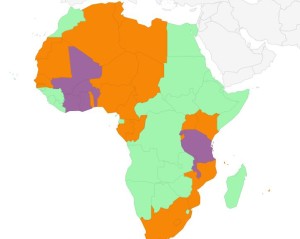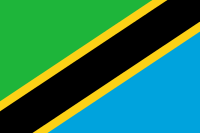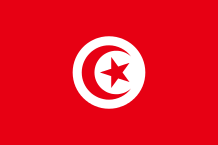At the end of June 2017 the African Court circulated its mid-term activity report, covering the period from 1 January 2017 to 30 June 2017 (“Report”). I have checked with African Court officials, who have confirmed to me that the report is for public distribution. I am therefore adding the entire report to the end of this post. I understand that the African Court will add the Report to its website at some stage, perhaps with some additions. In the meantime, given the public status of the Report, I thought readers would appreciate the current version of the report in full.
Well worth reading in its entirety, the Report describes the activities undertaken by the African Court in the first six months of the year, and details judicial, administrative and outreach activities, as well as the implementation of decisions of the Executive Council, relating to the functioning of the African Court. But before getting to the Report itself, I wanted to set out a few thoughts that jumped out at me (if you would rather skip my thoughts, scroll to the end of this post just to access the Report itself).
Country Engagement
Without wanting to sound like a broken record, the continuing failure of AU member states to engage with the African Court remains a problem. Splitting the problem into two sections might help. The first part, and probably biggest issue since it is required before addressing the second part, is the failure of AU member states to ratify the African Court Protocol. Ratification of the African Court Protocol, allows the African Court jurisdiction over cases brought by AU member states, the African Commission and intergovernmental organizations.

Ratification of the African Court Protocol does not provide Individual or NGOSs with direct access to the African Court. Given that ratification of the Protocol is therefore something of a half way point in terms of access, getting universal ratification seems like a realistic goal. Currently however, only 30 out of 55 AU member states have signed up. Whilst some AU member states may have concerns over allowing individuals and NGOs direct access to the African Court-concerns which are disputed by the African Court itself which actively encourages full access- it is discouraging to see no new signatures to the African Court Protocol in this period, the last being Chad in February 2016.
The second part of the issue is AU member states allowing individuals and NGOs direct access to the African Court through signature of an Additional Declaration under Article 34(6) of the African Court Protocol. On this subject we should recognise the great news of Tunisia signing the Additional Declaration in May 2017 . As I have written recently, this move should be applauded, and recognized as the first North African country to fully sign up to the African Court.
Case Management
First of all, the slow but steady creation of a backlog of cases at the African Court is a concern. Despite the somewhat lukewarm response of many AU member states to fully engage with the African Court, the African Court now has 120 cases pending before it. Compare this docket with the African Court’s output between January 2017 and June 2017 (one judgement, one order and one advisory opinion) and the maths do not look good.
I haven’t recently examined all the cases currently pending before the African Court but an estimation that 80% concern Tanzania might be conservative. This Tanzanian overload must be monitored and brings us neatly on to the second case management issue; the implementation of judgements and provisional measures. In short, the Report shows that Tanzania, the host country of the African Court, appears to be failing to implement judgements or provisional measures.
According to the Report, the African Court’s first ever judgement on the merits, Mtikila v Tanzania, remains to be implemented. The spate of judgements critical of Tanzania’s criminal justice system (Alex Thomas v Tanzania, Onyango and others v Tanzania, Abukari v Tanzania), also remain to be implemented or Tanzania has filed for interpretation of the judgement (due in September 2017).

Perhaps most striking of all is Tanzania’s apparent failure to implement provisional measures to halt the execution of several applicants currently on death row. Whilst Tanzania operates a moratorium on the death penalty, it seems somewhat worrying that it is not prepared to comply with Provisional Measures to halt executions when it is already doing so. This seems however to be conducive of a bigger issue between the African Court and Tanzania that these particular cases perhaps.
On the bright side, the Report also contains positive news on the implementation of the Zongo v Burkina Faso judgement. The Report details Burkina Faso having fully paid out compensation to the families of the victims, and indicted those alleged to have been behind the death of Norbert Zongo and his associates. Given these positive steps it seems a little harsh that the Report has listed Burkina Faso as “not fully implementing the Court judgement of almost two years ago” for not having printed the judgement in a newspaper or on an official website. Also whilst on Burkina Faso, its worth noting that the Report omits the Konaté judgement from its implementation section with no obvious reason why.
One final point on case management. Its interesting to see the issue of a reporting and monitoring mechanism raised. The Report sets out the need for a proper system to allow the African Court and others to follow the implementation of its judgements. This issue is only going to become more important as the caseload of the African Court increases and focus widens from just judgements rendered to the effectiveness of these judgements in making real changes across Africa.
Budget and Premises
Finally, the Report gives us some insight into the African Court’s budget. The Report sets out the budget for the year 2017 is $ 10,315,284, comprising $ 8,709,318 (84%) from AU members states and $ 1,605,966 (16%) from International Partners. A quick search will show the European Court of Human Rights 2017 budget is just over 71,000,000 Euros for the year, not including expenditure on the building and infrastructure. The Inter-American Commission has a 2017 budget of around $11,500,000, of which $5,643,000 was allocated by the Organization of American States. This means the IACHR needs to secure voluntary contributions of approximately $6,000,000 to keep afloat. I am loathed to draw direct comparisons between the regional human rights systems, but it’s always somewhat interesting to see the three budgets together.

One last wrinkle is the Report’s ongoing discussions over a permanent premises for the African Court in Arusha, Tanzania. The current temporary premises are deemed too small, but plans for a presumably larger permeant facility remain (literally) on the drawing board. I wonder whether the reasons for the delays in building this new premises here can be read alongside Tanzania’s apparent reluctance to fully engage with the African Court either through implementation of judgements or provisional measures?
Conclusion
In conclusion then, the Report is well worth a read. It is extremely useful in understanding the current caseload as well as the only resource I know of to review the implementation of previously decided cases. Let’s hope the Report is read by everyone interested in the African Court and contributes to the continuing growth of the African Court as a truly continental human rights court.
 Thanks for reading!
Thanks for reading!
Follow us on Twitter: @acthpr_monitor and www.acthprmonitor.org
